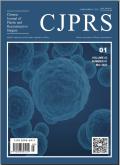An innovative resection of giant neurofibromas
Chinese Journal of Plastic and Reconstructive Surgery
Pub Date : 2025-06-01
DOI:10.1016/j.cjprs.2025.06.003
引用次数: 0
Abstract
Background
Plexiform neurofibromas (PNF) are highly vascular tumors with the potential for significant growth. Surgical removal of giant PNF is often challenging because of intraoperative hemorrhage. This study proposed and evaluated an innovative surgical approach involving FENCY ligation and the role of preoperative embolization in the resection of giant PNF.
Methods
This was a retrospective, interventional, and sequential case series conducted in a plastic and reconstructive surgery unit. We summarized all patients with PNF who underwent resection at our center between 2019 and 2024. Surgical case notes from 11 patients with giant PNF who underwent FENCY ligation were reviewed, including three patients who received preoperative embolization. All patients participated in structured telephone interviews. Patient demographics, surgical safety, postoperative recovery, and patient satisfaction were evaluated.
Results
Among 456 patients with 494 PNF who underwent surgical resection, we categorized the procedures into median, large, and giant PNF subgroups. To illustrate comprehensive perioperative and surgical approaches, we analyzed seven female and four male patients with giant PNF. The median maximum tumor diameter at the time of surgery was 30.4 cm (range, 11.5–55.6 cm). Most PNF were located on the face (63.6%), followed by the back (18.2%), buttocks (18.2%), upper limbs (9.1%), and neck (9.1%). The median intraoperative hemorrhage volume was 366 mL (range, 10–2 034 mL), And the median hospital stay was 17 days (range, 14–33 days). The mean follow-up duration was 2.5 years (range, 0.4–5.5 years). No severe complications were observed, except for one case of infection.
Conclusion
PNF resection, particularly giant PNF resection, is a high-risk treatment option. Comprehensive evaluation, perioperative preparation, and surgical techniques are required to ensure efficacy and safety. FENCY ligation and preoperative embolization can be used to resect giant PNF in multiple complex regions with satisfactory outcomes.
巨大神经纤维瘤的创新性切除术
背景:丛状神经纤维瘤(PNF)是一种高度血管性肿瘤,具有显著的生长潜力。由于术中出血,手术切除巨大的PNF往往具有挑战性。本研究提出并评估了一种创新的手术方法,包括FENCY结扎和术前栓塞在切除巨大PNF中的作用。方法采用回顾性、介入性、顺序性的病例分析方法,在某整形重建外科进行。我们总结了2019年至2024年间在我们中心接受切除术的所有PNF患者。我们回顾了11例接受FENCY结扎的巨大PNF的手术病例记录,其中包括3例术前栓塞的患者。所有患者都参加了结构化的电话访谈。评估患者人口统计学、手术安全性、术后恢复和患者满意度。结果在456例接受手术切除的494例PNF患者中,我们将手术分为中位、大和巨PNF亚组。为了说明综合围手术期和手术方法,我们分析了7名女性和4名男性巨大PNF患者。手术时肿瘤中位最大直径30.4 cm(范围11.5-55.6 cm)。PNF主要位于面部(63.6%),其次是背部(18.2%)、臀部(18.2%)、上肢(9.1%)和颈部(9.1%)。术中出血量中位数为366 mL(范围10 ~ 2034 mL),住院时间中位数为17天(范围14 ~ 33天)。平均随访时间为2.5年(范围0.4-5.5年)。除1例感染外,未见严重并发症。结论PNF切除术,特别是巨大PNF切除术是一种高风险的治疗选择。需要综合评估、围手术期准备和手术技术以确保疗效和安全性。FENCY结扎和术前栓塞可用于切除多个复杂区域的巨大PNF,效果满意。
本文章由计算机程序翻译,如有差异,请以英文原文为准。
求助全文
约1分钟内获得全文
求助全文
来源期刊

Chinese Journal of Plastic and Reconstructive Surgery
Surgery, Otorhinolaryngology and Facial Plastic Surgery, Pathology and Medical Technology, Transplantation
CiteScore
0.40
自引率
0.00%
发文量
115
审稿时长
55 days
 求助内容:
求助内容: 应助结果提醒方式:
应助结果提醒方式:


